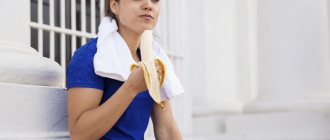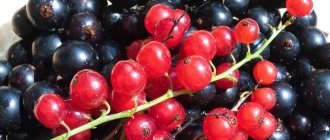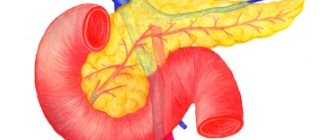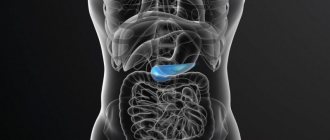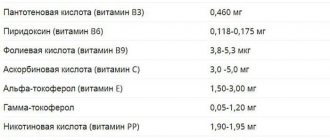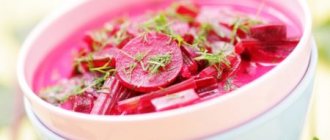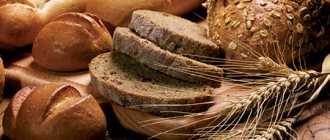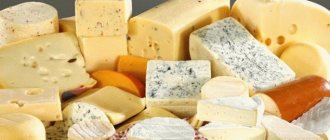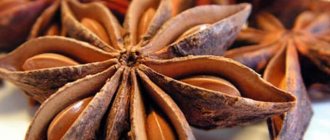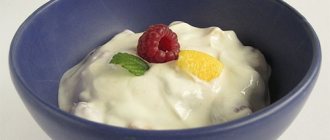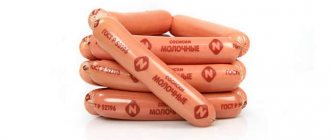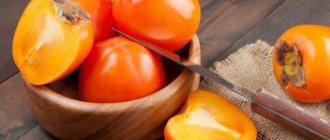Even with a disease such as pancreatitis, not all patients want to limit themselves to a meager diet. Therefore, a lot of questions arise about permitted products.
Among them is the question of whether some other baked goods can be dried for pancreatitis, and what is strictly prohibited. It is relevant and the answer to it is not entirely transparent, since much depends on the individual characteristics of the patient, the type and stage of development of the disease.
Composition and calorie content of the product
Sushki and bagels are hard bakery products. They are baked from wheat flour, have a round or oval shape and a hole in the middle. The classic recipe for products includes: flour, water, eggs, salt, vegetable oil, may contain yeast, margarine. Poppy, cumin, sesame, powdered sugar or glaze are often used as additional ingredients for sprinkling.
On average, the calorie content of baked goods varies from 175 to 336 Kcal.
The products are rich in vitamins B, E, PP, as well as sodium, copper, zinc, manganese, phosphorus, iron, iodine, and potassium. They contain proteins, saturated fatty acids, and starch. The products are enriched with copper and manganese (100 grams of dried fruit provides 50% of the body’s daily requirement for copper, and 50 grams provides the daily requirement for manganese).
Rusks for acute pancreatitis and exacerbation of chronic
Wheat bread crackers without additives can be included in the diet after about 2 weeks from an attack of pancreatitis. They can be consumed with soup, kefir and other fermented milk products, tea. To prevent mechanical irritation and “scratching” of the mucous membranes of the esophagus and stomach with hard crumbs of crackers, they should be pre-soaked and chewed thoroughly.
Other types of crackers (rye, butter, spicy, etc.) are prohibited during the acute period of illness.
The benefits of baked goods for the body
Dried bagels have the same composition, but differ only in size and degree of hardness.
- Dryers are usually round in shape, they are harder and much smaller in size than bagels.
- The bagels can be round or oval, they have more moisture, therefore they are slightly softer than dryers, and they reach up to 9 cm in diameter.
Due to their composition, the products have the following beneficial effects on humans:
- Normalize the functioning of the nervous system organs.
- Reduces feelings of irritability and anxiety.
- Helps strengthen the immune system.
- Activate brain activity.
- Promote the formation of healthy cartilage and bone tissue.
- Replenish energy reserves.
- Thanks to a significant amount of copper, it counteracts hair loss.
- The lactic acid bacteria included in the product help restore the gastrointestinal microflora.
- Thanks to fiber, they normalize digestion.
Unlike other rich types of baked goods, the use of baked goods does not cause flatulence, fermentation, increased gas formation, or bloating. This is facilitated by the technology of preparing products. Therefore, such products can be consumed for diseases of the digestive tract outside the acute stage.
Permitted and prohibited products
In order for the diet to meet the patient’s expectations, patients need to know which foods should be completely excluded from their menu and which are allowed for consumption. The table below gives a list of such products.
| Products are prohibited | Healthy dishes |
|
|
Possible harm of eating dryers
Lamb products contain a lot of easily digestible carbohydrates. On the one hand, this allows you to quickly saturate the body with energy, but on the other hand, consuming such a product in large quantities leads to excess weight gain. If you consume easily digestible carbohydrates excessively, they are no longer absorbed by the body and begin to accumulate in the form of fat cells.
Sushi and bagels contain a certain amount of fat. Therefore, during the period of exacerbation of diseases of the digestive tract, their use can cause harm to the body, since digestion of the product will place an increased load on the stomach and pancreas. Poor digestion of food, in turn, can lead to upset stomach, intestines, and the development of colic.
Eating large amounts of flour can also cause constipation.
Today, manufacturers of lamb products often add to their product:
- flavorings;
- dyes;
- flavor enhancers;
- fats;
- low-quality oil;
- spices;
- oxidizing agents.
All these substances have a very negative effect on the human body, and primarily on its digestive tract. Harmful chemicals irritate, injure the mucous walls of the digestive organs, and cause gastrointestinal disorders. Therefore, before purchasing a treat, you must be sure to familiarize yourself with its composition or prepare such products at home yourself.
Will eating crackers cause harm to patients with pancreatitis?
High-quality drying and bagels have a lot of useful properties:
- contain a large amount of B vitamins, as well as vitamins PP and H and microelements necessary for the body of children and adults;
- can act as a source of easily digestible proteins and carbohydrates;
- Unlike other baked goods and breads, they do not cause flatulence and put little strain on the stomach and pancreas.
Is it possible to eat dry food with pancreatitis? Despite all the advantages, in large quantities the product can cause significant harm:
- abnormal stool, constipation;
- weight gain due to high calorie content.
In addition, drying and crackers for acute pancreatitis should not contain prohibited additives, such as poppy seeds, nuts and onions, otherwise they may cause a relapse of the disease.
Peculiarities of introducing dried vegetables and bagels into the diet for pancreatitis
Sushki and bagels are rich bakery products. According to the nutritional rules for pancreatitis, baked goods are prohibited both at the acute stage and in the chronic form of the disease. However, bagel products have some features that make them an exception to this rule.
Firstly, drying, unlike fresh baked goods, does not lead to an increase in acidity in the body, does not cause bloating, flatulence, or increased gas formation. Secondly, lamb products are easier to digest and during the process of digestion they do not put such a strain on the digestive organs as fresh bread.
In addition, such a product has a longer shelf life. Since in case of inflammation of the pancreas, food should be consumed in moderation, it is very convenient to have supplies of dry goods.
Whether it is possible to eat dry food during pancreatitis depends on the stage and severity of the disease.
In the acute phase
In case of acute inflammation of the gland, it is prohibited to consume lamb products. This is due to the following factors:
- The products contain fats, the absorption of which puts an increased burden on the pancreas.
- Sushi and bagels contain sugar and a lot of simple carbohydrates, the absorption and metabolism of which requires increased production of insulin. During the period of illness, the pancreas is not able to cope with its work in the same volumes, therefore, due to insufficiency of insulin, diabetes mellitus may develop.
- Store-bought products may contain additives that are harmful to the pancreas, and consuming them will cause severe irritation of the pancreas.
- They contain a lot of fiber, and in case of diseases of the digestive tract, this amount of dietary fiber irritates the intestinal mucosa.
In remission and chronic pathology
Drying for chronic pancreatitis, as well as at the stage of achieving remission, after stopping acute attacks of the disease, can be introduced into your diet in moderate quantities. You can try treats no earlier than two weeks after the acute symptoms of the disease have subsided.
For pancreatitis, it is recommended to eat dryings and bagels soaked (in tea, compote or rosehip decoction). This way the product is better absorbed and easier to digest. In addition, eating products that are too hard can damage tooth enamel.
Drying can be eaten either in its pure form or sprinkled with poppy seeds, sesame seeds, and caraway seeds:
- Poppy has a mild analgesic effect and helps improve digestion.
- Sesame activates the body's cleansing of toxins, reduces stomach acidity, and normalizes metabolism.
- Cumin has a mild analgesic, antidepressant, antimicrobial effect, helps relieve colic and fermentation processes. At the same time, cumin activates the production of gastric juice, so drying with cumin can only be consumed at the stage of stable remission, no earlier than a month after the acute attack of the disease has stopped.
Tracking your diet
As a rule, therapy for acute and chronic pancreatitis is always under the close supervision of the attending physician. It includes a special diet, daily routine and the use of medications. In this case, special attention is always paid to the therapeutic diet, the adherence to which completely depends on the patient.
It is especially difficult for those who love sweets. Since not all confectionery and flour products can be eaten with inflammation of the pancreas. This is due to the fact that refined sugar in this case is strictly prohibited, and to maintain normal life functions it is allowed to consume small amounts of glucose and carbohydrates.
After all, the food that a patient suffering from pancreatitis includes in the daily menu should be light enough for the affected organ to cope with. And sugar, in turn, can create a serious burden on the pancreas.
Permitted quantity of product
Despite the fact that baked goods are dietary compared to other baked goods, you should not eat a lot of them. Due to the large amount of simple carbohydrates, excessive consumption of treats will lead to obesity and related problems.
In the first month, you should not eat more than one bagel per day; when the disease enters the stage of stable remission, as well as in the chronic form of the disease, it is allowed to eat 1-2 bagels per day. You cannot include such a product in your diet every day. The product should not be consumed more than three to four days a week.
Crackers during remission of chronic pancreatitis
During the period of remission, crackers can be consumed in small quantities (1-3 pieces) per day as an alternative to fresh bread or dessert. Wheat crackers are the safest, but if remission is stable, you can also include rich crackers and crackers with some types of fillers (raisins, dried apricots) in your diet. Rye crackers, as well as various spicy, salty crackers, and flavored breads are strictly prohibited.
In addition to eating crackers as a snack with tea or kefir, they can be added to soups and stews, and also used in ground form for breading meat, poultry and fish when baking.
It is better if you make crackers yourself from bread of which you are confident. The preparation process is simple: just cut the bread (loaf) into slices and leave to dry at room temperature for 3-4 days. You can speed up drying by placing the bread slices in the oven.
If you prefer to buy ready-made crackers, then always carefully study the composition of the product: on the packaging of high-quality crackers approved for food with pancreatitis, it should be indicated that they are made from wheat bread (loaf). You cannot purchase crackers that contain dyes, flavors, preservatives, taste improvers, hydrogenated vegetable fats and additives that are certainly harmful to the pancreas (spicy seasonings, etc.).
| Squirrels | 11.2 g |
| Carbohydrates | 67.5 g |
| Fats | 1.4 g |
| Calorie content | 330.0 kcal per 100 grams |
Dietary Compliance Score for Chronic Pancreatitis: 8.0
Rating of product suitability for nutrition during acute pancreatitis: 1.0
B1, B2, B5, B6, B9, Bp, E, H, PP
molybdenum, potassium, manganese, copper, magnesium, phosphorus, iron, calcium, selenium, iodine, zinc, sulfur, sodium
Recommended maximum portion of crackers per day for chronic pancreatitis: 50-70 grams
Pediatrician and pediatric endocrinologist. Education: Faculty of Pediatrics, SSMU. I have been working since 2000, and since 2011 as a local pediatrician in a children's clinic. In 2020, I completed my specialization and received a certificate in pediatric endocrinology, and since the beginning of 2020 I have been additionally receiving appointments as…
Rules for choosing a product in a store
To ensure that drying does not harm the pancreas, you need to choose them carefully, paying attention to both the composition and appearance of the product.
| Criterion | Can | It is forbidden |
| Sprinkles | For chronic pancreatitis, as well as at the stage of stable remission, you can eat products sprinkled with cumin, sesame, and poppy seeds. At first, it is better to give preference to baked goods without any extraneous additives. | It is not advisable to consume a product that is overly glazed or sprinkled with powdered sugar, as it contains a lot of sugars. |
| Compound | Classic crackers and bagels must contain: flour, water, eggs, butter, salt. | If the product contains preservatives, flavorings, flavor enhancers, stabilizers, you should not buy such a delicacy - it can cause an exacerbation of inflammation of the pancreas. It is not recommended to use drying products containing starch. |
| Appearance | In appearance, high-quality dryers have a flat, glossy, smooth surface, and there is no mold. There should be no cracks, swelling or chips on them. The dryers are fragile, the bagels are soft. | If the product is very hard, this means that the preparation technology was violated or the products have been lying around for a long time. If there are a lot of broken products in the package, the product is considered to be of low quality. |
When purchasing dryers, be sure to look at the expiration date. Drying products can be stored for 45 days, bagels for 25 days, and products sealed in plastic packaging for no more than 3 days.
The product is best stored in a dry, dark place at room temperature.
Selection of crackers
Crackers can be either an independent food product or an excellent addition to other dishes. In particular, they can be added to soups and salads.
Rusks can be prepared at home or purchased at the store. The second method requires less time and often turns out to be more convenient. However, there are some selection rules that must be followed.
- Only fresh products. It is strictly forbidden to purchase expired crackers or products with an expiration date approaching their expiration date. Stale foods negatively affect intestinal function. It is necessary to pay attention not only to the implementation period, but also to the appearance. So, sometimes even “fresh” products can turn out to be moldy if they are not heat treated correctly.
- Only fresh products.
It is strictly forbidden to purchase expired crackers or products with an expiration date approaching their expiration date. Stale foods negatively affect intestinal function. It is necessary to pay attention not only to the implementation period, but also to the appearance. So, sometimes even “fresh” products can turn out to be moldy if they are not heat treated correctly. When purchasing crackers in a store, you should choose a product in transparent packaging so that you can visually assess their quality - Rusks, not crackers. Small crackers in opaque packages are often fried before drying. This helps achieve a more pronounced taste. However, such products should not be consumed by people with pancreatitis.
- Without additives. Salt, pepper, flavoring fillers - all this is strictly contraindicated. The only exceptions are large crackers with the addition of dried fruits - raisins or dried apricots.
- Flour. Much attention should be paid to the composition. You can only eat crackers made from premium flour. Products made from rye flour are strictly excluded - they are contraindicated for use in case of pancreatitis.
Homemade Baking Recipes
It is best to prepare drying at home from natural products. This delicacy will be most beneficial for the body.
Dietary drying
Components:
- wheat flour – 250 grams;
- water – 100 ml;
- vegetable oil – 20 grams;
- vanillin - half a teaspoon;
- sugar – a teaspoon (you can take a sugar substitute);
- salt - one quarter teaspoon;
- baking powder - on the tip of a teaspoon.
From this amount of products you should get about 50 small dryers.
Sift the flour, combine with sugar, vanillin, salt, baking powder. Then gradually pour water and oil into the dough, while constantly stirring the mixture. Knead the stiff dough. Cut it into pieces and roll out into ropes. Then divide them into smaller pieces and roll them into rings. Place on a greased baking sheet and bake in an oven preheated to 200 degrees for 30 minutes.
Bagels with poppy seeds
Components:
- wheat flour – 300 grams;
- sugar – 80 grams (you can use a sugar substitute);
- egg - one large or two small;
- egg yolk - one piece;
- a tablespoon of butter;
- a tablespoon of poppy seeds;
- baking powder - on the tip of a teaspoon;
- vanillin - one sachet;
- one quarter teaspoon of salt.
Mix flour, baking powder, vanillin and salt. Separately, beat the egg and sugar with a mixer. Melt a tablespoon of butter, and when it cools a little, pour it into the egg-sugar mixture, then add this mixture to the bowl with flour. Mix everything well. Place the dough on a floured surface and knead so that it does not stick to your hands. Then cut into pieces, form flagella from them, which are then connected into a ring.
Place the bagels on a baking sheet, previously covered with parchment or greased with oil. Brush the top of the product with egg yolk, previously mixed with a tablespoon of boiled water, and sprinkle with poppy seeds. Bake for 20 minutes in an oven preheated to 200 degrees.
- Using the monastery collection to treat pancreatitis
You will be surprised how quickly the disease recedes. Take care of your pancreas! Over 10,000 people have noticed significant improvements in their health simply by drinking a morning drink...
Sample menu for acute and chronic pancreatitis for one week
The presented menu for patients with pancreatitis serves only as an example - it can be replaced with other dishes allowed at the stage of stable remission.
Why are gingerbreads considered a forbidden product for pancreatitis and what can be replaced with them?
Those suffering from pancreatitis should permanently exclude gingerbread from their diet. For what reason are they a taboo product, and is there a safe alternative?
Permitted and prohibited types of jam for pancreatitis
First, berries without syrup are gradually introduced into the menu, then you can add jam to tea, compotes, and only then if the reaction is positive
What sweets can you eat if you have pancreatitis and what types of sweets are best to avoid?
Even at the stage of stable remission, the dose of treats should be limited. Otherwise, you can provoke heaviness in the abdomen, colic and exacerbation of the disease.
Recipes for making crackers
You can also make crackers in the microwave. However, keep in mind that microwave ovens do not heat food evenly. Therefore, even small pieces of bread may only be half cooked.
To get crackers with an unusual taste, you can add a little hard low-fat cheese (15-20%). To do this, you also need to cut fresh white bread into small pieces of equal size, carefully place it on a baking sheet and grate hard cheese on top on a fine grater.
Crackers with cheese are perfect for a snack or afternoon snack
Bake this dish for no more than 20 minutes, after which you need to turn off the oven and leave the bread in it for another half an hour. During this time, the crackers will be completely cooked. You can eat them only when the crackers have cooled completely - after 2-3 hours.
To do this, you need to cut the bread into small pieces of the same size and add a little salt on top. Place the salted pieces in the oven for 20 - 30 minutes.
Tomato-flavored crackers can be obtained by first soaking pieces of bread in tomato juice for a while. After this, they must be placed on a baking sheet and cooked like regular crackers.
We carefully monitor our diet
Treatment of pancreatitis is carried out under close medical supervision. Avoiding relapses during clear remission is the patient’s responsibility. You will need to make changes to your lifestyle - give up bad habits, switch to light, low-calorie foods. It is more difficult for those with a sweet tooth to fight the disease. It is strictly forbidden to consume sugar during pancreatitis; only glucose is allowed in moderate quantities.
Strict adherence to restrictions will prevent complications at the first signs of the disease and prevent inflammation of the gland from developing into the stage of acute pancreatitis. The food consumed by the patient must be light, not creating additional stress on the vulnerable digestive organ, provoking new stress. A moderate amount of essential microelements is needed during the treatment period.
Prohibited Products
Cakes are prohibited if you are sick.
If the pancreas is damaged, sweet dishes that contain sugar and fat are considered prohibited. List of the most dangerous to health:
- chocolates, caramel;
- Everyone’s favorite ice cream, halva, condensed milk in any form is prohibited;
- flour is prohibited;
- cake, cookies, gingerbread;
- grapes, dates, figs are on the list of prohibitions.
The above products cannot be eaten as an independent dish and cannot be included in a recipe for cooking. Chocolate, flour, and sweets can harm the organ during the chronic course of the disease; during the acute period, they are dangerous to health.
Sweets for pancreatitis are not the most suitable food option. But you can always find an alternative to your usual treats and not deprive yourself of small joys to the detriment of your health. Eating lightly and drinking plenty of fluids is the key to health.
Cholecystitis and pancreatitis are paired diseases, since they have the same causes. Cholecystitis is a disease associated with the gastrointestinal tract, in which there is inflammation in the gallbladder. One of the reasons is stones in the bile ducts, which prevent the free flow of bile.
With pancreatitis, there is an inflammatory process in the pancreas. Treatment of pancreatitis and cholecystitis is carried out simultaneously, using the same methods of therapy, which make it possible to reduce the load on the affected organ.
Sweets for pancreatitis
The body of a healthy person is universal. The body easily copes with episodic food load. A sick body should be protected. Sweets with pancreatitis are strictly prohibited. Frequent consumption of sugar-containing foods is harmful; a sharp increase in insulin release is fraught with an increase in blood sugar and the development of diabetes. Favorite desserts are banned.
When the first signs of the disease are detected - pain and accompanying symptoms, it is prescribed to go on a strict diet. During therapeutic fasting, it is allowed to take plenty of water in small portions. Then we gradually introduce light protein foods into the menu: poultry, veal or fish. After a month of such corrective nutrition, you are allowed to try fruit mousses, puddings, jellies, containing exclusively glucose.
You will have to give up cakes, chocolate and baked goods! To the forbidden product - sugar - an equally harmful product - fat - is added. Excess cholesterol is extremely harmful. The following foods are considered dangerous for pancreatic patients:
- chocolate, candies containing chocolate ingredients, caramels;
- baked goods: buns, pretzels, donuts;
- gingerbread, cookies and tori;
- figs, grapes and dates;
- ice cream and condensed milk.
Halva for pancreatitis - the sweetness is questionable. During the acute stage of the disease, you should definitely refuse halva; consuming oriental sweets can worsen the course of the disease, the product is so fat-containing and high-calorie. In the relief stage, go to your doctor for advice. The doctor will prescribe acceptable standards for using the product. If the result is positive, the doctor will decide whether to leave halva on the menu or remove it completely. Subject to permission - no more than twice a week for a minimum amount of grams.
Marmalade for pancreatitis is a sweetness allowed in moderate portions. It is often prepared with a sweetener, which is perfect for pancreatic problems. Experienced confectioners are sophisticated in the variety of flavors of this product; any patient will be able to choose a product according to personal preferences.
Marshmallow is not forbidden for pancreatitis, only during a period of stable remission under the supervision of a doctor. The product is low in calories, consists of protein and minerals. Pectin, which is included in the composition, has a beneficial effect on the functioning of the pancreas, helping to remove toxins from the body and reduce cholesterol levels in the blood.
Fruits are a source of energy
Unsweetened fruits of common origin (it is better to avoid exotic ones) are an excellent source of energy, an alternative to harmful sweets. You are allowed to eat fruit jelly, jellies, and drink compotes. You are allowed to treat yourself to jam prepared without adding sugar.
Eat safely:
- dried fruits;
- marshmallow, berry mousse, marmalade;
- baked goods made from soft dough, biscuits;
- jam, sour jam, marmalade, honey;
- protein soufflé, meringue.
Drying for pancreatitis, crackers are an approved product during periods of exacerbation of the disease and strict fasting. They are considered the most suitable dietary sweet. They should be purchased in the store soft, without fat content in the recipe. The best way out is to cook yourself.
Listen to the body - the body will tell you: it is already enough or it is allowed to increase the amount of new food.
Poppy as an analgesic for acute pain
A decrease in acidity levels leads to a significant burden on the gastrointestinal tract. Poppy seeds help improve digestion, which is welcome for pancreatitis. In case of illness, poppy plays the role of an analgesic, having an antispasmodic effect on the pancreas, eliminating acute pain during attacks.
Patients with pancreatitis will need to find out the absence of individual intolerance to the product. Unknowingly you can cause harm.
Is it possible to eat corn silk and bee bread if you have pancreatitis?
If you have pancreatitis, you need to carefully monitor your diet. Many products are immediately excluded and the person is forced to give up the usual menu. In particular, a ban is imposed on many baked goods and sweets. You can replace them with regular crackers, crackers or bagels. Rusks and drying products are not contraindicated for patients with pancreatitis, but their choice must be approached with special care. Crackers can be either an independent food product or an excellent addition to other dishes.
In particular, they can be added to soups and salads. Rusks can be prepared at home or purchased at the store. The second method requires less time and often turns out to be more convenient. However, there are some selection rules that must be followed.
Only fresh products. It is strictly forbidden to purchase expired crackers or products with an expiration date approaching their expiration date. Stale foods negatively affect intestinal function. It is necessary to pay attention not only to the implementation period, but also to the appearance. When purchasing crackers in a store, you should choose a product in transparent packaging so that you can visually assess their quality. Rusks, not croutons. Small crackers in opaque packages are often fried before drying.
This helps achieve a more pronounced taste. However, such products should not be consumed by people with pancreatitis. Without additives. Salt, pepper, flavoring fillers - all this is strictly contraindicated. The only exceptions are large crackers with the addition of dried fruits - raisins or dried apricots.
Much attention should be paid to the composition. You can only eat crackers made from premium flour. Products made from rye flour are strictly excluded - they are contraindicated for use in case of pancreatitis.
Cooking at home It is best to make crackers yourself. To do this you will need white bread, baking parchment foil and an oven. First you need to preheat the oven. The bread needs to be cut into slices or pieces, it all depends on what end result is needed - crackers or croutons. The finished slices are laid out on a baking sheet, previously covered with foil or parchment. In order to prepare crackers at home, you do not need complex technologies and equipment.
It is important to remember that it is strictly forbidden to lubricate the surface with oil or sauce! After this, the baking sheet goes into the oven for minutes. Many ovens have temperature indications on the handles. If these are not provided in older models of stoves, you can use special thermometers. After this time has passed, the oven must be turned off. However, the bread should remain there for another half hour.
Then you need to open the oven and allow the crackers to cool completely. After an hour, the crackers are completely ready. You can also make crackers in the microwave. However, keep in mind that microwave ovens do not heat food evenly. Therefore, even small pieces of bread may only be half cooked.
To do this, you also need to cut fresh white bread into small pieces of equal size, carefully place it on a baking sheet and grate hard cheese on top on a fine grater. Crackers with cheese are perfect for a snack or afternoon snack. Bake this dish for no more than 20 minutes, after which you need to turn off the oven and leave the bread in it for another half an hour.
During this time, the crackers will be completely cooked. You can eat them only when the crackers have cooled completely - after an hour. If a person with pancreatitis does not have concomitant kidney or heart diseases, you can prepare crackers with salt. To do this, you need to cut the bread into small pieces of the same size and add a little salt on top.
Place the salted pieces in the oven for 20 - 30 minutes. Tomato-flavored crackers can be obtained by first soaking pieces of bread in tomato juice for a while. After this, they must be placed on a baking sheet and cooked like regular crackers. Bagels are another option for baked goods that can be eaten with pancreatitis.
In the acute phase of the disease, their use is prohibited. However, for chronic pancreatitis, bagels are allowed for consumption. During the remission stage, patients with pancreatitis can diversify their diet with bagels and dryings. This product can be eaten weeks after an exacerbation of chronic pancreatitis. Due to the fact that the bagels are slightly larger in size than the drying ones, you can eat them one per day.
This amount will be enough for a daily snack. It is recommended not to overuse bagels and eat them no more than once a week. If you have pancreatitis, it is strictly forbidden to consume crackers with store-bought additives. As a rule, these are products prepared using technologies and additives that can harm the patient’s body with pancreatitis.
Such crackers can be found on the shelves of almost any store. They come in rye, white or dark bread, with the addition of salt, bacon, cheese, and tomatoes.
Almost all such products are fried or smoked. Store-bought crackers with various additives and flavor enhancers are strictly prohibited for consumption during any phase of inflammation of the pancreas. It should also be remembered that all supplements have nothing to do with natural products and are synthetic powder products. The use of such products can lead to a more severe course of the disease and provoke a relapse in chronic pancreatitis.
Even if prepared at home, not all crackers can be eaten with pancreatitis. It creates an excessive load on this organ, requiring a large amount of enzymes, which can lead to an exacerbation of the disease.
Inflammation of the pancreas is not an easy disease, requiring a constant diet. It is quite difficult to plan your diet if a person, before falling ill, loved to eat tasty and satisfying fatty dishes with a bite of fragrant bread.
But after diagnosing the disease, it is important to review your menu in order to limit the body from frequent relapses of inflammation. What kind of bread can you eat with pancreatitis or avoid baked goods completely? Many patients are interested in the important question: is it possible to eat bread during the period of relapse of inflammatory processes of the pancreas?
At the moment of exacerbation, the human body receives incredible stress. The gland swells and the ducts become clogged, the accumulated enzymes begin to poison the tissues that produced them. At this moment, the patient suffers from terrible pain in the hypochondrium or even in the back, every meal is accompanied by vomiting, and the general condition worsens significantly. While the patient is experiencing regular vomiting, it is necessary to completely avoid all foods and drinks, including bread. If you break this rule, the gland will produce another dose of enzymes, which will only increase pain.
It is best to treat a relapse under the supervision of doctors. After all, the acute phase is incredibly dangerous for the health and life of the patient. Untimely and improper treatment can cause purulent processes in the hypochondrium and even cause the death of the patient. Therefore, it is very important to adhere to complete fasting during acute pancreatitis.
But after the vomiting has passed and the condition begins to stabilize, you can begin to try some foods. The main rule during this period is moderation. Bread is allowed to be eaten after the acute stage, but only from white and high varieties of wheat. It is necessary to completely abandon baking made from rye flour, as it increases secretion and threatens to cause another attack of pathology.
Under no circumstances should you eat fresh bread products; it is better to eat yesterday’s bread or crackers. If the choice falls on crackers, then they must be dried independently at the right temperature so that there is no mold on them and without any seasonings. What kind of bread can a patient with chronic pancreatitis eat?
Bread for pancreatitis in the chronic stage is also eaten with caution and in small quantities. The chronic stage is more gentle on the body, but at any moment it can give way to a severe relapse, so a strict diet must be followed daily. Crispbread for pancreatitis is considered an indispensable product for obtaining plant proteins and carbohydrates.
Crispbread is a dietary product; it is specially designed so that the digestive system rests and does not burden itself after eating it. How can you get rid of pancreatitis using a folk remedy? We reveal a very old recipe. All you need is... Read more. The composition of breads often includes more than one flour from different varieties of cereal plants. For those who have impaired insulin production, buckwheat flour products must be included in their diet; they are nutritious and at the same time contain a minimal amount of sugar.
Light sports are good for health
To activate the outflow of pancreatic secretions, simple physical exercises are useful, helping to normalize blood flow in the affected pancreas.
Among the simplest - inhalation and exhalation followed by a short breath-hold. Tighten your stomach and gently tighten it, relax after a few seconds. Combine breathing procedures with abdominal tension and a maximally inflated belly, then relaxation again. Conduct light training for the abdominal muscles in a similar way. Exercises can be done lying down or sitting, three times a day.
Diet during exacerbation of pancreatitis and cholecystitis
An exacerbation of the disease is a period that requires not only drug treatment, but also adherence to a strict diet. What rules should the patient follow?
- In the first two to three days, doctors recommend completely abstaining from food. You need to drink still water and rosehip infusion up to 1 liter per day.
- For the next three to four days, you can have warm tea without sugar with crackers or dried bread, pureed soup or milk porridge prepared with the addition of water in a 1:1 ratio, as well as a protein omelet made in a double boiler.
- After 7 days, the diet is allowed to be varied with low-fat and non-acidic cottage cheese, soups or side dishes based on vegetables (with the exception of cabbage).
- Fish or white meat, steamed meatballs or cutlets can be consumed on the 9th - 10th day.
- A gentle diet must be followed for these diseases for six months to a year until a period of stable remission occurs and the examination results are stable.
The disease is receding - we rejoice and do not risk it again
The key to stable, normal well-being of the patient is low-calorie food and frequent drinking. During the period of remission, you should not take risks and try to eat something tasty and not eaten for a long time. If the disease ceases to remind itself within a month, the list of permitted products is gradually expanded. Light desserts and Lenten pastries are welcome. It is better if the preparation takes place at home. At home, it is easy to trace the composition of a dish and prevent harmful dyes, preservatives and emulsifiers, which are dangerous to the health of a patient with pancreatitis, from entering the body.
If you prefer a store-bought product, be sure to monitor the expiration date and carefully read the list of ingredients. Choose products that match the recipe.
Control your appetite. Don't eat too many different foods. Know your limits. After waiting an hour or two, enjoy the desired dish without harm to digestion. To help your body recover faster, consider your diet. Remember: you need to eat five to six times during the day, in parts. It is better if the food turns out to be ground, rather than rough and hard.
Pancreatitis is a disease that manifests itself at the most unexpected moment. Recently, this disease has become much younger; the main symptoms are observed not only in older patients, but also in the younger generation. Therefore, it is better to take care of your health in advance and prevent the development of this disease.
Treatment is accompanied by a change in the patient's diet. The diet involves avoiding junk food and adding healthy foods to your diet. Many people simply cannot imagine their daily diet without baked goods. We have to look for some alternative. There are few dietary options for bread products. As for dried fruits, they are even recommended for use for pancreatitis. Moreover, it is useful even for a child.
Products that do not have flavors or fillers are safe for health. If a product contains poppy seeds, you should not refuse it. This supplement has positive properties. Any innovations in the diet must be discussed with your doctor. Even a small menu change on your own can lead to complex consequences.
Pancreatitis is a complex disease that occurs in acute and chronic forms. Half the population suffers from this disease. The reason for this is considered to be alcohol, smoking, junk food in the diet, obesity, diabetes, and a passive lifestyle. The disease can also be caused by a genetic predisposition to the disease.
The last reason becomes a significant lever that triggers the course of the disease. All this can be avoided if you adjust your lifestyle in time and adhere to a healthy diet. In case of illness, in addition to drug treatment, the basis of recovery is diet.
Changing your diet is very important; without it, complete recovery is impossible. It can be very difficult to completely eliminate harmful foods from your life, but it is necessary if you want to maintain your health. Junk food is a habit that can and should be replaced. The diet is prescribed for many diseases, for example, cholecystitis, gastritis. When changing your diet, you must not forget about bakery products.
For many, this is the basis of their daily diet. But there are some alternative options, these include drying. Many who follow a diet are interested in the question of whether it is possible to eat dried fruit with pancreatitis? This should be looked into in more detail.
What kind of fish can be used for pancreatitis: varieties, cooking recipes
Contents 1 Crackers for pancreatitis and cholecystitis 2 Bagels in the diet of patients with pancreatitis 3 Which crackers from which bread are preferable for pancreatitis? Bagels are one of the best types of baked goods that are recommended to enrich the patient's diet. They do not include prohibited and harmful additives in their structure and are perfect for taking them with lactic acid products or tea. Another good alternative to bread is dry bread. It is important to remember that these products should be consumed in moderation. On the contrary, they can cause constipation and subsequent dysbacteriosis. Moreover, bagels and dryers should be soaked so as not to have an irritating effect on mucous surfaces. It is recommended to make croutons yourself at home by simply cutting the bread into small pieces and drying them in the oven for minutes.
What should the patient's diet be?
Therapy and diet are determined by the doctor. It takes into account what the body can do and what it needs. The right food plays a very important role in recovery. Both the progress and regression of the disease depend on it.
It’s difficult for everyone, and those with a sweet tooth experience particular inconvenience. Almost all sweet products are completely excluded from the patient’s diet. Glucose should be consumed in small quantities. The diseased organ must fully cope with the food consumed by the patient. And sugar and products that contain it cause complications.
The patient's diet should include an increased amount of protein and a decreased amount of fat. Chicken broths and decoctions are excluded from the diet for a long time because they have juice-containing properties. The food is steamed and boiled. Used in crushed, grated form. Frying is strictly prohibited with this diet.
Food should not be very cold, preferably at room temperature. Meals are not plentiful, but frequent in small portions. Therapeutic fasting is allowed for severe pain. Should last no more than two days. The main rule of nutrition during illness is to rest the pancreas. For the first two days of the disease, the patient is only allowed to drink, this can be still mineral water, weak tea, or rosehip decoction. All liquid should be taken warm.
It is suggested to exclude the following foods from the diet:
- fatty fish and dishes made from them;
- fatty meats, dishes made from them;
- lamb and beef fat;
- strong soups;
- ice cream;
- alcohol;
- baked goods, bread products;
- spicy dishes;
- smoked products, sausages, canned food;
- vegetables such as radishes, cabbage, sorrel.
To prevent the disease from developing, you need to change your habits a little. This applies to nutrition and life in general. First of all, you should avoid stress. Stress has a negative effect on the body. Alcohol abuse in all cases is fraught with the development of pancreatitis. You can’t overeat, you need to get up from the table with a slight feeling of hunger.
Spicy dishes provoke negative changes in the organ. Fatty and fried foods become taboo for a patient with this diagnosis. Overcooked foods are especially harmful. You need to watch your diet, it should be complete and healthy. The patient's diet includes fermented milk products, fruits, lean fish and meat, and vegetables.
Meals should be fractional. You need to eat small portions several times a day.
Comments
Please tell me, is it possible to use a small amount of drying with kefir during remission of chronic pancreatitis?
I’ll support you, why is there nothing about drying? Doesn't seem like a harmful product
To be able to leave comments, please register or log in to the site.
Changing your usual diet is difficult. This has to be done if a person is diagnosed with pancreatitis. Treatment without an appropriate diet will not bring the desired effect, and many favorite foods must be excluded from the diet. The list of foods that must be eaten with caution includes crackers. But not all types of these bread products are suitable for illness.
Dish recipes
We offer several healthy and tasty recipes for preparing dishes for those who suffer from cholecystitis and pancreatitis.
- For these ailments, pumpkin is an extremely useful product. Cooking recipe: peel the pumpkin, remove the seeds, cut into 3-5 cm pieces, steam them for about 20 minutes, then grind with a blender. Add dried apricots or raisins and a small amount of boiled milk to the resulting puree. You don't need sugar, because pumpkin has enough of it.
- Baked pumpkin. Cut the oblong fruit in half, remove the seeds, and cut the flesh into a “mesh”, place the pumpkin skin side down on a baking sheet and bake in the oven at 180 degrees.
- To make steamed meat aromatic and tasty, place the pieces in a steamer, and place peppercorns and garlic next to them. The dish will absorb the flavors, but will not be spicy. Fish is also prepared in the same way.
- Turkey meat is quite capricious when cooked; it can turn out dry or tough. To avoid this, you need to pour kefir over the turkey meat for 60 minutes, then add salt and wrap it with vegetables (potatoes, bell peppers, zucchini) in foil. Bake for the first 10 - 15 minutes at a temperature of 200 degrees, and then reduce to 160. Cooking time is determined by the size of the bird. Bon appetit!
Features of use
If you have diseases of the pancreas, you should eat crackers carefully and outside the period of exacerbation. Each piece must be chewed thoroughly until it becomes mushy. This will help facilitate the digestion of the product, since digestion processes begin in the oral cavity.
A piece can be pre-soaked in tea, compote or kefir.
Crackers should be consumed in moderation, starting with 1 piece per day.
You can eat the product yourself or use it instead of bread or a loaf. Small pieces are added to soup or any other liquid dish. Crushed crackers are well suited as a breading when baking lean fish or dietary meat in the oven.
It is necessary to pay attention to the shelf life of finished products and the integrity of the packaging. If it is damaged, eating crackers is strictly prohibited.
In acute form
In acute pancreatitis, a person should be on a fasting diet for several days. This is necessary in order to relieve the load on the pancreas and reduce the intensity of the inflammatory process.
In the chronic stage
In case of chronic pancreatitis, dry bread should be present in the patient’s diet. This will help provide the human body with the necessary nutrients. In addition, such a product is much healthier than fresh bread and other bakery products.
Cooking at home
You can buy crackers at any store, but it’s best to make the product yourself at home. This will make it possible to be confident in the natural composition and the absence of harmful components.
For this purpose, it is best to use homemade bread. Among industrially produced products, it is recommended to give preference to simple wheat bread. You cannot make crackers from buns and whole grain products containing seeds, cereals, raisins, dried apricots or prunes.
The product should be cut into slices 1-1.5 cm thick, placed on a baking sheet and covered with foil or parchment paper. Place in an oven preheated to +180°C for 15-30 minutes. After this time, do not remove the baking sheet, but leave it in the oven for another half hour. After complete cooling, the crackers are ready to eat.
- What kind of bread can you eat if you have pancreatitis?
- Is it possible to eat seaweed if you have pancreatitis?
- Is it possible to use butter for pancreatitis?
- Features of eating carrots for pancreatitis
I’ve been suffering and having back pain for 2 months now, thank you for the advice, I’ll buy “monastery tea” and hope it gets better! I see our Dnieper is some kind of unfavorable zone for the pancreas!
This site uses Akismet to reduce spam. Find out how your comment data is processed.
Even with a disease such as pancreatitis, not all patients want to limit themselves to a meager diet. Therefore, a lot of questions arise about permitted products.
Among them is the question of whether some other baked goods can be dried for pancreatitis, and what is strictly prohibited. It is relevant and the answer to it is not entirely transparent, since much depends on the individual characteristics of the patient, the type and stage of development of the disease.
Prohibited Products
As we said above, for pancreatitis the diet is strict, so many foods must be excluded.
Diet for pancreatitis of the pancreas, what not to eat at all:
- First of all, the patient needs to give up alcoholic beverages. There are times in everyone's life when they have to drink, for example, on a holiday or birthday. But, with this disease, you should not drink a lot of alcohol, otherwise you will not get rid of pancreatitis, but will only cause harm and complications.
- Completely exclude first courses that are cooked from fatty meat.
- You should not eat canned foods and canned seafood, such as sprat in tomato.
- Eggs are ok for this disease, however, you should not boil them hard.
- Radishes, onions, and bell peppers should not be consumed raw. It is difficult for the stomach to process such products, and even more so during the inflammatory process.
Pancreatitis, what can’t you eat? In the chronic course of the disease, the patient should give up spicy foods, fried or canned mushrooms, spinach, and legumes.
Prohibited lists of products:
- Banana.
- Figs
- Cranberry.
- Carbonated drinks.
- Baking (see recipes for pancreatitis).
- White bread.
- Strong drinks, such as coffee or strong black tea.
- Phosphide.
